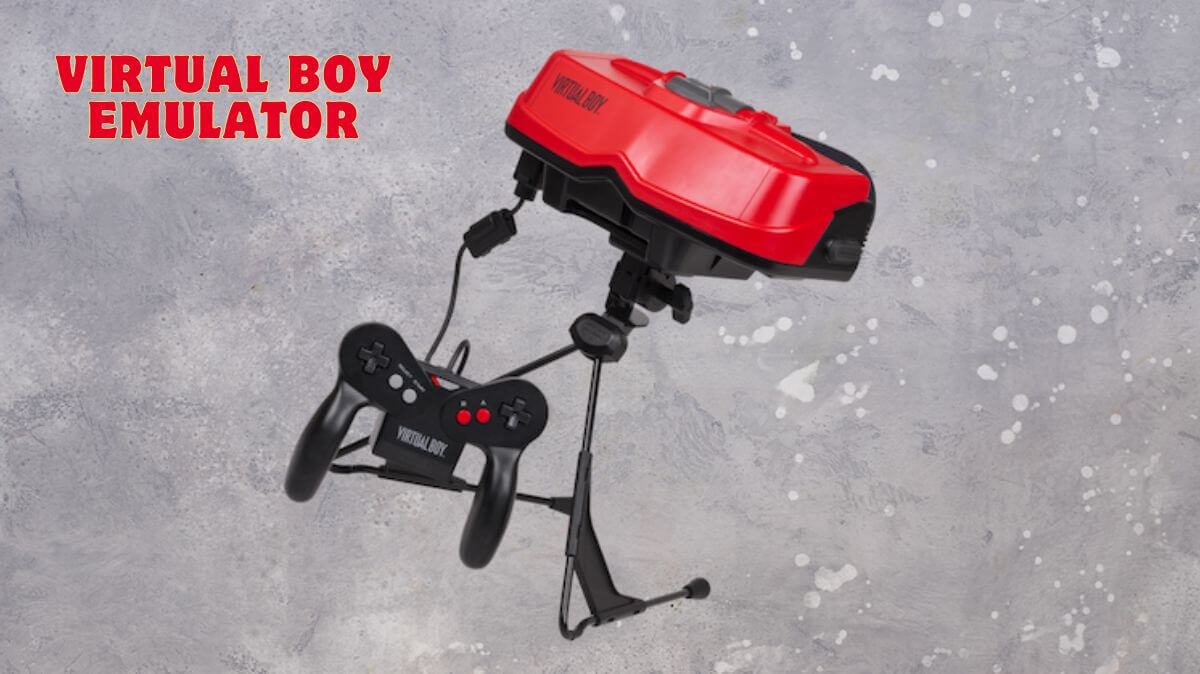Introduction to Virtual Boy Emulator
If you’re a fan of retro gaming, the Virtual Boy holds a special place in your heart. Originally released by Nintendo in 1995, this unique console promised an immersive 3D experience that captivated enthusiasts—despite its short-lived lifespan. Fast forward to today, and thanks to technology advancements, you can relive those nostalgic moments with a Virtual Boy emulator. But before diving into the world of emulation, it’s essential to understand what you’ll need for a smooth experience. In this guide, we’ll break down everything from system requirements to popular emulator options so you can get started without any hiccups. Let’s explore how to make your virtual adventures seamless and enjoyable!
Understanding System Requirements
When diving into the realm of a virtual boy emulator, understanding system requirements is crucial. You want to ensure that your device can handle the software without hiccups.
System requirements typically include both hardware and software specifications. This means you’ll need to look at your CPU, RAM, and graphics card capabilities closely.
Compatibility with the operating system plays a significant role as well. Each emulator may have different requirements based on whether you’re using Windows, MacOS, or Linux.
Additionally, some emulators demand specific drivers or libraries for optimal performance. Knowing these details ahead of time can save you from frustration later on.
Assessing your system’s current setup will help you make informed decisions about which emulator to choose for an enjoyable gaming experience.
Minimum vs Recommended Requirements
When diving into the world of virtual boy emulators, understanding minimum and recommended requirements is crucial. The minimum specs are what your system needs to run an emulator, albeit with basic performance. You might encounter slowdowns or graphical glitches.
Recommended requirements offer a smoother experience. They ensure you can enjoy games without interruptions or frame drops. Meeting these specs allows for better graphics and overall gameplay fluidity.
For those who want to play demanding titles, going beyond the recommended specifications can make all the difference. A powerful CPU and robust GPU will enhance your gaming experience significantly.
Knowing where your system stands helps in deciding which emulator suits you best while maximizing enjoyment from classic Virtual Boy games.
Key Components for a High-Quality Virtual Boy Emulator
To enjoy a seamless experience with a virtual boy emulator, several key components significantly influence performance.
First and foremost is the CPU. A powerful processor ensures that games run smoothly, reducing lag and enhancing responsiveness. Look for at least a dual-core setup.
Next up is RAM. Having sufficient memory allows the emulator to manage data efficiently, improving load times and overall gameplay fluidity. Aim for a minimum of 4GB; more can be beneficial.
Graphics capability also plays an essential role in rendering vibrant visuals accurately. Integrated graphics may suffice, but dedicated GPUs provide superior performance.
Storage matters too. An SSD can drastically improve loading speeds compared to traditional hard drives, making your gaming sessions much more enjoyable.
By focusing on these elements—CPU, RAM, graphics card, and storage—you’ll create an optimal environment for your virtual boy emulator adventures.
Also Read: Cradlewise Crib: A Secure Choice for Your Baby
Popular Virtual Boy Emulator and Their System Requirements
Several popular Virtual Boy emulators cater to different user needs and system capabilities. One of the most recognized is **RetroArch**, a versatile emulator that offers support for various gaming systems, including the Virtual Boy. It requires at least a dual-core processor and 2GB of RAM for smooth performance.
Another option is **VBjin**, known for its simplicity and efficiency. This emulator runs on minimal hardware, needing just a single-core CPU and 1GB of RAM to function adequately.
**Mednafen** is another strong contender, offering accurate emulation with slightly higher requirements. A dual-core processor and around 4GB of RAM ensure optimal gameplay without lags or glitches.
Choosing the right emulator often hinges on your system’s specifications as well as personal preferences in features and usability.
Troubleshooting Common Issues with System Requirements
When using a virtual boy emulator, system requirements can often lead to challenges. One common issue is insufficient hardware specs. If your machine struggles with performance, consider upgrading your RAM or GPU.
Another frequent problem arises from outdated drivers. Keeping graphics and sound drivers up-to-date can significantly enhance the experience. Check for updates regularly to avoid compatibility issues.
Sometimes, users encounter software conflicts, especially when running multiple applications simultaneously. Closing background programs may free up resources needed for smooth emulation.
Incorrect settings within the emulator itself can hinder performance. Double-check configurations like resolution and frame rate to ensure they align with your hardware’s capabilities.
If all else fails, consulting forums dedicated to virtual boy emulators might provide insights from fellow users who faced similar hurdles. These communities are invaluable for troubleshooting technical glitches effectively.
Conclusion
Emulating classic gaming consoles like the Virtual Boy can be a rewarding experience for retro enthusiasts. Understanding the system requirements is key to ensuring smooth gameplay and an enjoyable experience. Knowing the difference between minimum and recommended specs can help you optimize your setup.
Key components such as CPU, GPU, RAM, and storage play significant roles in how well a virtual boy emulator runs. Choosing the right emulator based on your hardware capabilities will make all the difference.
Many popular emulators are available today, each with unique system requirements that cater to different levels of performance. Familiarizing yourself with these options helps you select one that suits your needs without causing frustration or technical issues.
If you’re running into problems related to system requirements while using an emulator, troubleshooting common issues could save time and enhance enjoyment. Simple adjustments often lead to improved performance.
The world of emulation opens doors to playing nostalgic games once thought lost in time. By understanding what it takes to run a virtual boy emulator effectively, you’re well on your way to enjoying those iconic titles again.
